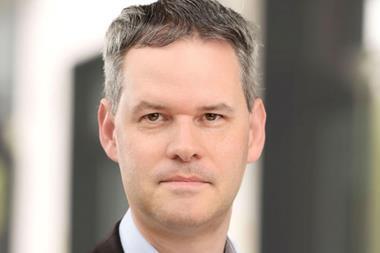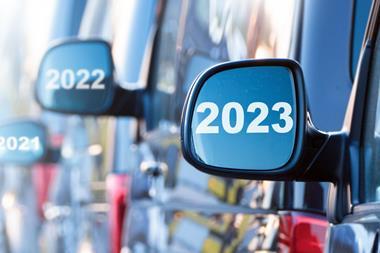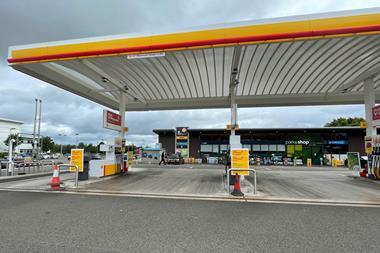Sales of electric cars in the UK are currently minuscule compared with their internal combustion engine (ICE) cousins, but the country’s biggest-selling car maker is gearing up for a rapid change in this state of affairs. At the Frankfurt Motor Show last month, Ford announced that it expects the majority of its sales will be electrified by the end of 2022. This will require a major shake-up in the UK car market because in the year to August battery and hybrid cars achieved a combined market share of 7.5%, up from 6% for the same period a year ago. Battery electric vehicles (BEVs) were the star performers up 93.1%, from 9,009 units to 17,393, and hybrid electric vehicles (HEVs) performed strongly up 20.2% from 50,739 units to 60,989, but demand for plug-in hybrid electric vehicles (PHEVs) collapsed earlier this year after the government removed tax incentives, and their sales were down 37% from 27,918 units to 17,594. These figures are dwarfed, however, by the 994,941 petrol engine cars sold over the same period, up 2.4% on a year ago and with a market share of 65.5%, and diesel sales of 410,012, down 19.3% after well-publicised problems but still taking a 27% market share.
Commenting on the figures in relation to the government’s Road to Zero strategy, the Society of Motor Manufacturers and Traders (SMMT) chief executive, Mike Hawes, said: "These figures show the scale of the challenge ahead. It’s a long road to zero and while manufacturers can deliver the technology, they can’t dictate the pace of uptake. To support a smooth transition and deliver environmental gains now, we need a long-term government commitment to measures that give consumers confidence to invest in the latest technologies that best suit their needs."
The SMMT is clearly not expecting 2020 to be the breakthrough year for electric cars. It has released forecasts predicting there will be 51,000 BEV registrations in 2020, to take a 2.2% market share, and 52,000 PHEV registrations with a 2.3% market share.
Ford, however, does appear to expect sales of electrified cars to take off soon, and no one can dispute its leadership in the UK market. It produces two of the top three-selling models in the UK the Ford Fiesta and the Ford Focus, while its Ford Kuga is ranked eighth, so it clearly understands what British car buyers are looking for.
The company revealed its take on the next few years at the Frankfurt Motor Show last month, displaying a range of new vehicles which it said would help pave the way for electrified models to outnumber combined sales of its conventional diesel and petrol models.
Stuart Rowley, president, Ford of Europe, said: "With electrification fast becoming the mainstream, we are substantially increasing the number of electrified models and powertrain options for our customers to choose from to suit their needs. By making it easier than ever to seamlessly shift into an electrified vehicle, we expect the majority of our passenger vehicle sales to be electrified by the end of 2022."
Earlier this year, the company committed that every new Ford passenger vehicle nameplate in Europe would include an electrified option.
Among the electrified vehicles being showcased in Frankfurt were the new Kuga plug-in hybrid and Explorer plug-in hybrid SUVs, as well as a new Tourneo Custom plug-in hybrid people-mover, a new Puma EcoBoost hybrid compact crossover and the Ford Mondeo hybrid wagon. In addition, Ford’s new Mustang-inspired all-electric performance SUV will arrive in 2020, with a targeted pure-electric driving range of more than 370 miles and fast-charging capability. In total, Ford plans to launch eight electrified vehicles this year that it forecasts will contribute to sales of one million electrified vehicles in Europe by the end of 2022. A further nine vehicles are planned for introduction by 2024.
The company also announced details of new pan-European charging solutions for its customers. Ford will partner with six energy suppliers in Europe, including Centrica in the UK and Ireland, to install home charging boxes and provide green energy tariffs that will make charging faster and more affordable for customers. A further initiative, in partnership with NewMotion, will help drivers locate and pay for charging more easily at more than 118,000 points.
Ford has developed a well thought out and wide-ranging strategy to deal with the move to electrification, but one variable it can’t control is government policy. The tax changes earlier this year, which slammed the PHEV market into reverse, demonstrate how fragile the fledgling market is. The company will be hoping for more sensitivity from the government if its bold timetable is to be realised.
Hydrogen projects prove the technology
A fleet of close to 500 hydrogen-powered fuel cell electric vehicles (FCEV) has travelled more than eight million kilometres since a project to develop hydrogen refuelling stations across Europe was set up in 2015.
Hydrogen Mobility Europe (H2ME) said more than 30 hydrogen refuelling stations (HRS) had been developed across the UK, Germany, France, Scandinavia, and other European countries, and its FCEVs had travelled more than five million kilometres in 2018 alone.
The H2ME initiative aims to support the commercialisation of fuel cell and hydrogen technologies in Europe. As well as creating the world’s largest network of HRS, it is sharing best practice and standards and helping to develop attractive ownership models in uses such as taxis, captive fleets, and in cities with strict environmental targets. In total, the project aims to deploy 49 HRS and 1,400 hydrogen fuel cell cars and vans by 2022.
Ben Madden, director at Element Energy and project lead and coordinator, said: "Today, we can already see an acceleration of the use of hydrogen as a fuel in heavy-duty and high-demand applications, such as taxis, delivery vehicles and trucks."





























No comments yet